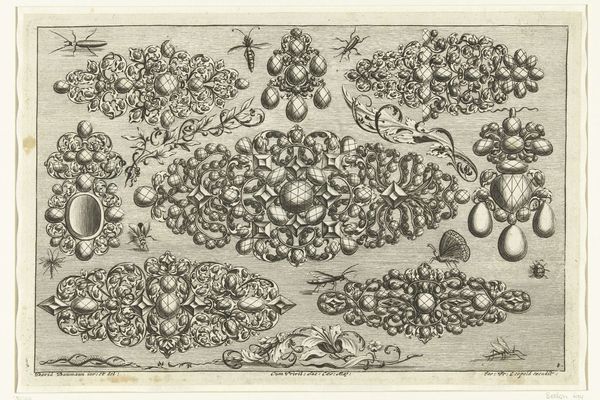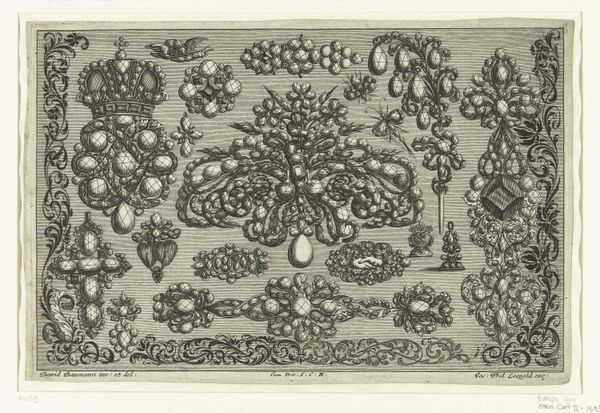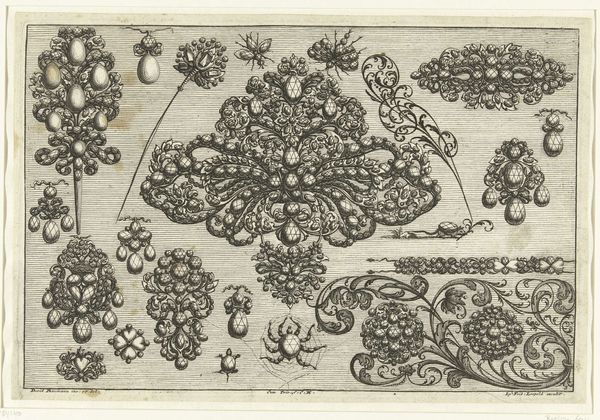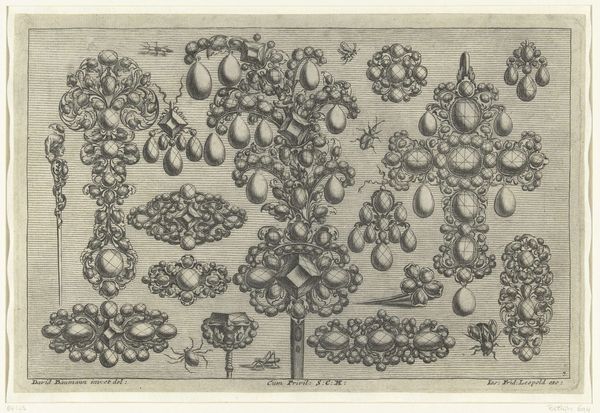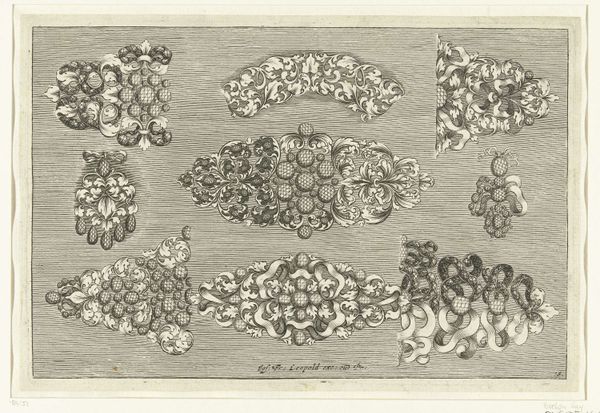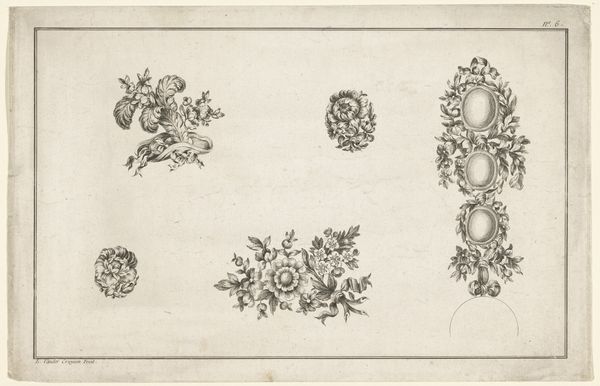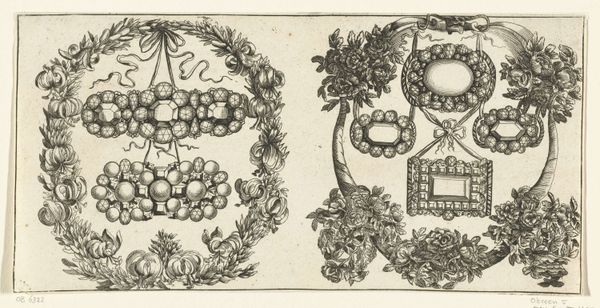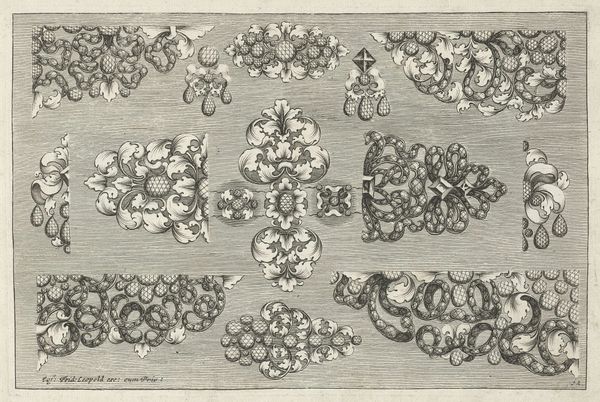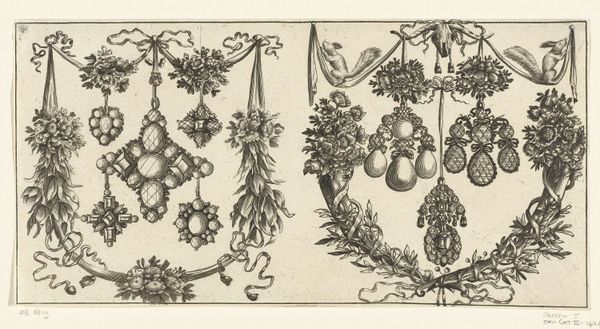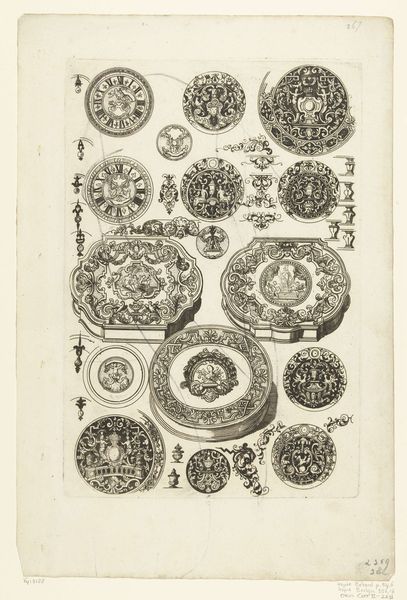
drawing, print, metal, engraving
#
drawing
#
natural stone pattern
#
rippled sketch texture
#
baroque
#
pen drawing
# print
#
metal
#
old engraving style
#
form
#
pen-ink sketch
#
intricate pattern
#
line
#
pen work
#
decorative-art
#
layered pattern
#
coloring book page
#
engraving
#
intricate and detailed
Dimensions: height 180 mm, width 270 mm
Copyright: Rijks Museum: Open Domain
Joseph Friedrich Leopold created this undated print, "Dertien ontwerpen voor juwelen en een bladrank," which translates to "Thirteen Designs for Jewelry and a Leaf Tendril." Made in the late 17th or early 18th century, possibly in Germany or Austria, the print reflects the Baroque era’s love of elaborate ornamentation and display of wealth. The designs feature crowns, foliage, and what appear to be fruits, all rendered in meticulous detail. These images would have circulated among the wealthy merchant classes or aristocracy. It speaks to the rigid social hierarchy of the time, where jewelry was not merely aesthetic but a marker of status and power. The designs evoke the courtly life of the Holy Roman Empire, and the kind of institutions that catered to elite taste. To fully understand the context, we could look into the printmaking industry of the period, the patronage system, and sumptuary laws governing the display of wealth. The meanings we attribute to art are always embedded in history.
Comments
No comments
Be the first to comment and join the conversation on the ultimate creative platform.
